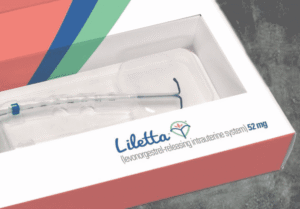Pinched Nerve in Lower Back_ What to Do and Avoid
Understanding a Pinched Nerve in the Lower Back
A pinched nerve in the lower back occurs when excessive pressure is applied to the nerve roots extending from the spinal cord. This pressure can irritate the nerve, causing discomfort that may radiate from the back into the hips or legs. This guide explores the symptoms, causes, treatment options, and preventive measures for managing a pinched nerve in the lower back effectively.
Symptoms of a Pinched Nerve in the Lower Back
The primary indicator of a pinched nerve is pain, which can vary in intensity and location. Common symptoms include:
-
Localized pain in the lower back
-
Radiating pain into the hips or down the legs
-
Burning or electric-like sensations
-
Tingling or a “pins-and-needles” feeling
-
Numbness or reduced sensitivity to touch
-
Muscle weakness in the affected area
These symptoms can range from mild discomfort to severe, debilitating pain, depending on the degree of nerve compression.
Causes of a Pinched Nerve in the Lower Back
Several factors can contribute to a pinched nerve in the lower back, including:
-
Herniated or Bulging Discs: Discs that cushion the vertebrae may bulge or rupture, pressing on nearby nerves. This can result from aging, spinal degeneration, or weakened core muscles.
-
Injuries: Trauma from accidents or improper lifting techniques can strain the lower back and compress nerves.
-
Heavy Lifting: Activities like weightlifting, squatting, or moving heavy objects can exacerbate disc issues and pinch nerves.
-
Medical Conditions: Conditions such as arthritis, spinal stenosis, tumors, compression fractures, infections, or inflammatory diseases can lead to nerve compression.
Immediate Relief Strategies for Pinched Nerve Pain
For quick relief from the discomfort of a pinched nerve, consider the following approaches:
-
Over-the-Counter Medications: Nonsteroidal anti-inflammatory drugs (NSAIDs) like ibuprofen (Advil) or naproxen (Aleve) can reduce inflammation and alleviate pain. Muscle relaxants or corticosteroids may also be helpful.
-
Heat or Ice Therapy: Applying heat or ice to the lower back can soothe pain and reduce swelling. Alternate between the two for optimal results.
-
Rest: Avoid activities that worsen the pain, but refrain from prolonged immobility, as gentle movement can aid recovery.
Comprehensive Treatment Options
Treatment for a pinched nerve depends on its severity. Options include:
Non-Surgical Treatments
-
Rest and Activity Modification: Limiting aggravating activities while maintaining light movement can promote healing.
-
Physical Therapy: Targeted exercises and stretches can strengthen core muscles, improve spinal alignment, and relieve nerve pressure.
-
Spinal Decompression: Non-invasive techniques may help create space around the nerve, reducing compression.
-
Injections: Corticosteroid or anesthetic injections (e.g., bupivacaine) can reduce inflammation and provide temporary pain relief.
Diagnostic Tools
To identify the cause of nerve compression, healthcare providers may use:
-
X-rays to assess bone structure
-
Magnetic Resonance Imaging (MRI) or Computed Tomography (CT) scans for detailed images of soft tissues
-
Nerve conduction studies to evaluate nerve function if numbness or weakness persists
Surgical Interventions
If conservative treatments fail, surgery may be necessary. Common procedures include:
-
Discectomy: Removal of a portion of a herniated disc pressing on a nerve.
-
Laminectomy: Removal of part of the vertebrae to relieve pressure on the nerve.
-
Foraminotomy: Widening the openings where nerve roots exit the spine.
-
Lumbar Fusion: Stabilizing the spine by fusing vertebrae with hardware.
-
Radiofrequency Ablation: Using heat to disrupt pain signals from affected nerves.
Risks of Untreated Pinched Nerves
If left unaddressed, a pinched nerve can lead to serious complications, such as:
-
Chronic pain or burning sensations
-
Persistent numbness or tingling
-
Muscle weakness or paralysis in severe cases
-
Loss of bowel or bladder control
-
Permanent nerve damage, resulting in long-term disability
Seek immediate medical attention if pain prevents walking or if symptoms worsen, as these may indicate severe nerve compression or neurogenic claudication.
Physical Therapy and Exercise for Recovery
Physical therapy plays a crucial role in managing pinched nerve symptoms. A therapist may recommend:
-
Core-Strengthening Exercises: These stabilize the spine and reduce pressure on nerves.
-
Flexion or Extension Movements: Forward-bending (flexion) exercises may help with spinal stenosis, while backward-bending (extension) movements can relieve disc-related compression.
-
Low-Impact Activities: Walking, cycling, or swimming can improve blood flow and reduce inflammation without straining the back.
-
Stretching: Gentle stretches can relieve muscle tightness that exacerbates nerve compression.
Avoid high-impact activities like running, contact sports, or heavy weightlifting, as these can worsen symptoms.
Preventing Pinched Nerves in the Lower Back
To reduce the risk of developing a pinched nerve, adopt these habits:
-
Proper Lifting Techniques: Keep your back straight, bend at the knees, and use your legs to lift heavy objects.
-
Strengthen Core Muscles: A strong core supports the spine and minimizes strain.
-
Maintain Good Posture: Avoid slouching or leaning forward during prolonged sitting or standing.
-
Stay Active: Regular low-impact exercise keeps the spine flexible and promotes circulation.
-
Manage Weight: Excess body weight can increase pressure on the spine, contributing to nerve compression.
When to Seek Medical Help
Consult a healthcare provider if you experience:
-
Severe pain that limits mobility or daily activities
-
Symptoms that persist despite conservative treatments
-
Numbness, tingling, or weakness that worsens over time
-
Loss of bowel or bladder control, which requires urgent attention
Early intervention can prevent long-term complications and improve outcomes.
Frequently Asked Questions
What Design of Nerve Agony Medications Is Specifically for Me?
Answer coming soon. We are working on detailed responses to this common question.
⭐ Expert Tips
- Include seasonal or trendy variations to keep your meals exciting.
- Highlight prep shortcuts or time-saving techniques for busy cooks.
- Consider dietary restrictions and include substitution suggestions.
✅ Key Takeaways
- These dinner ideas are perfect for impressing guests or enjoying special occasions.
- Choose recipes that match your skill level and available kitchen tools.
- Presentation and taste both contribute to a memorable dining experience.
📣 Join Our Community
Want more inspiration like this? Subscribe to our newsletter for weekly dinner ideas and cooking tips!





